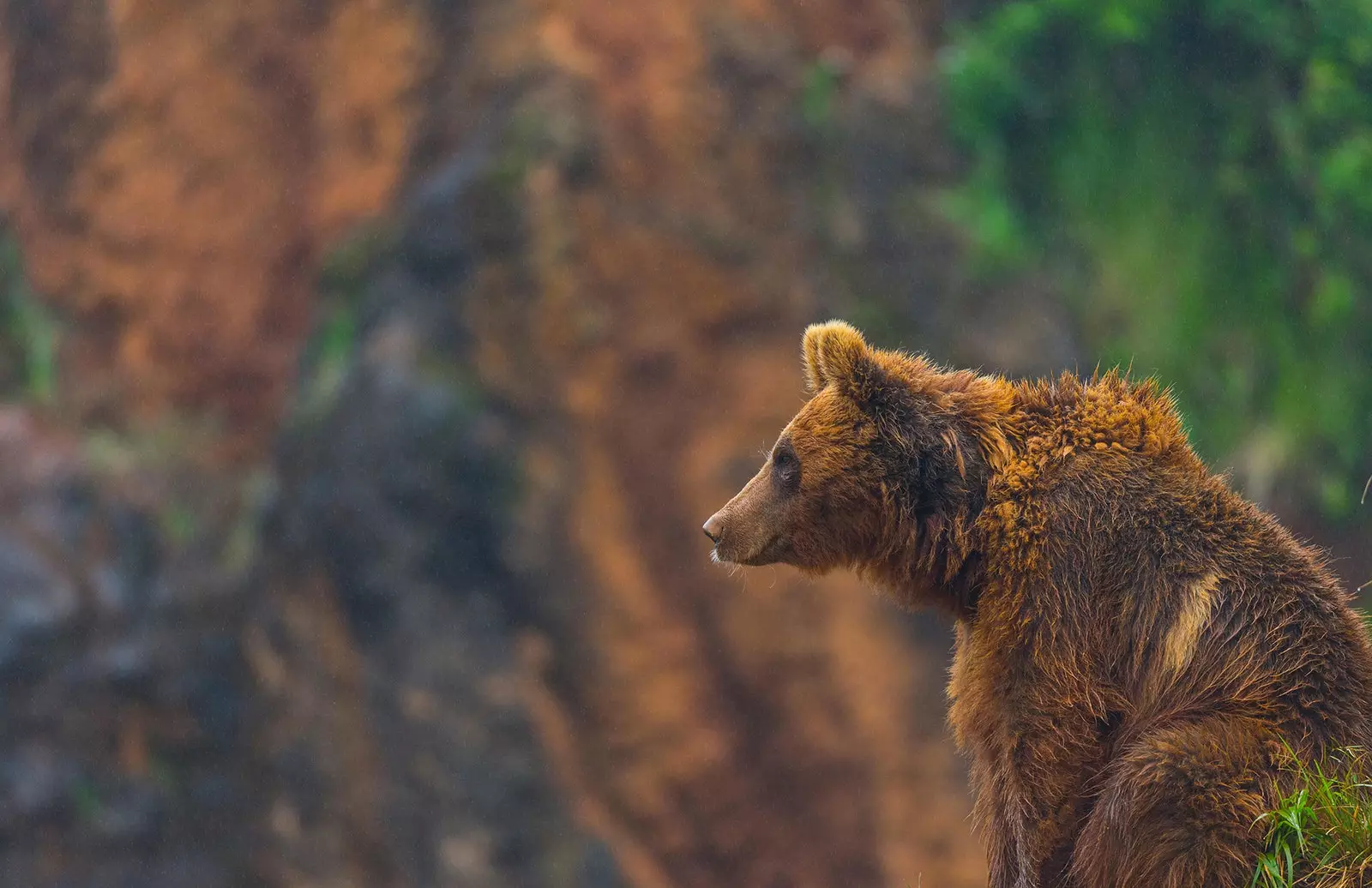
I have seen a bear!
we have come to Las Ubiñas Natural Park - La Mesa to see bears But the goal is actually a good excuse to enter their habitat, one of the most beautiful and best preserved natural spaces in the north of Spain, and give long walks through valleys bursting with spring splendor, dreaming of the little angels in an 11th century monastery recovered as a Parador – that of Corias – and, as a culmination, give us a Michelin star feast at Casa Marcial, Nacho Manzano's restaurant. The plan is not bad.
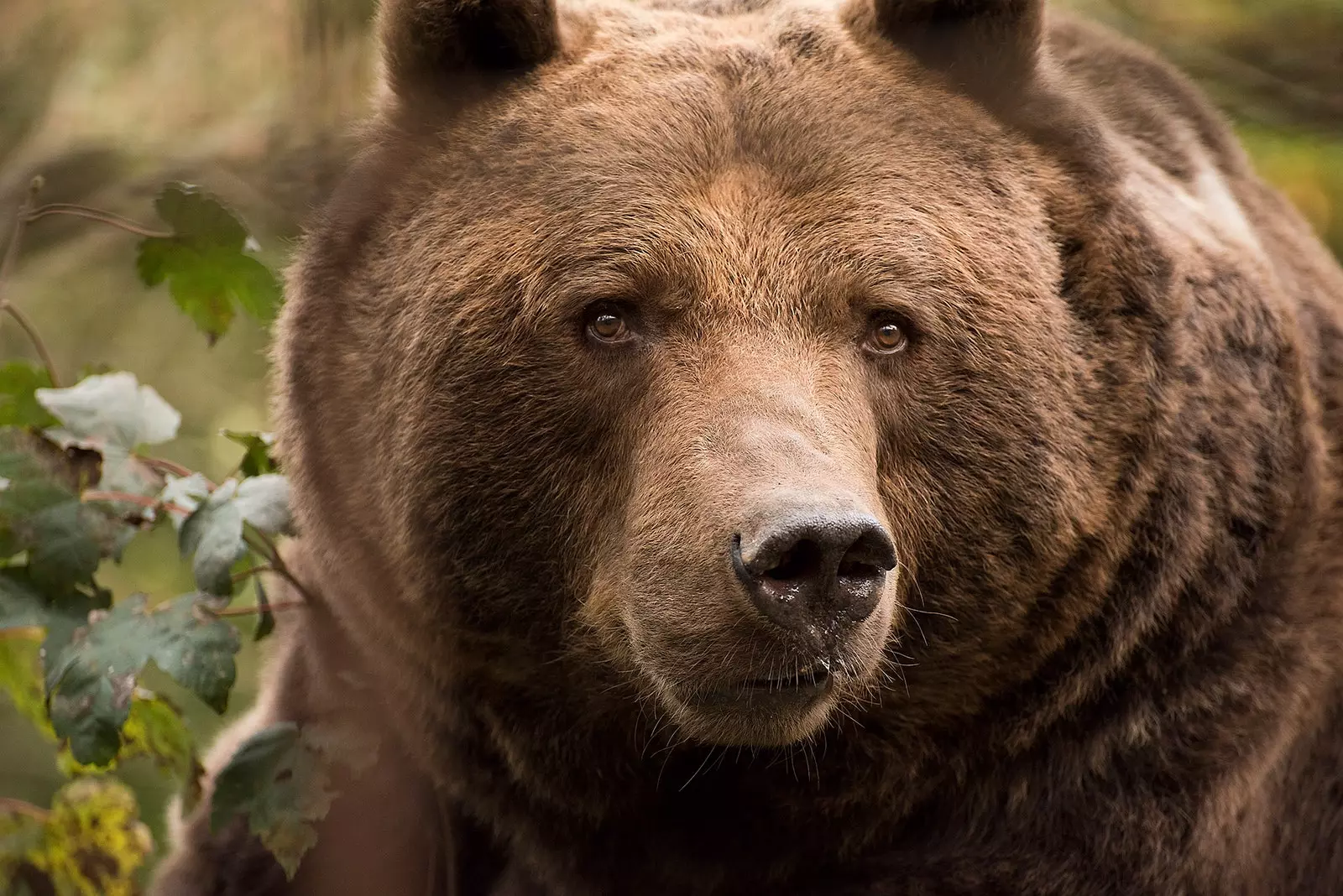
This is about conservation and respect, not about taking a selfie
Yes, you have to get up early. Under the gray light that precedes dawn, beech, oak, ash and maple forests they show their most magical and mysterious facet through the mist. Almost silently so as not to disturb its inhabitants, we advance along a path muddy from yesterday's rains.
Until this unique enclave, where it is still possible witness the courtship of the almost extinct Cantabrian capercaillie, we have arrived on a trip organized by the British conservationist Paul Lister and The European Nature Trust, the foundation he created to return to nature what is hers. Famous for his species reintroduction and recovery programs, Lister knows well the main domains of the brown bear and wolf in Europe and North America and he feels a special affinity with Asturias .
“Unlike other places where they use bait, food to lure animals to hiding places where humans wait, here bear observations are made at a minimum of 500 meters, with long-range lenses from one slope to another. One might think encounters aren't that exciting, but keeping track of them is even more so. Also, we are talking about conservation, about respect, not about taking a selfie”, he says bluntly.
Other philanthropists and environmental activists who are friends of Lister participate in the excursion, such as the film producer Jose Maria Morales , from Wanda Films, responsible for some of the most beautiful and award-winning nature documentaries of recent years – if you haven't seen Guadalquivir (2013) and Cantabrian (2107) , you're already late– or Jose Antonio Garcia Menendez , owner of the idyllic and remote hotel Tierra del Agua .
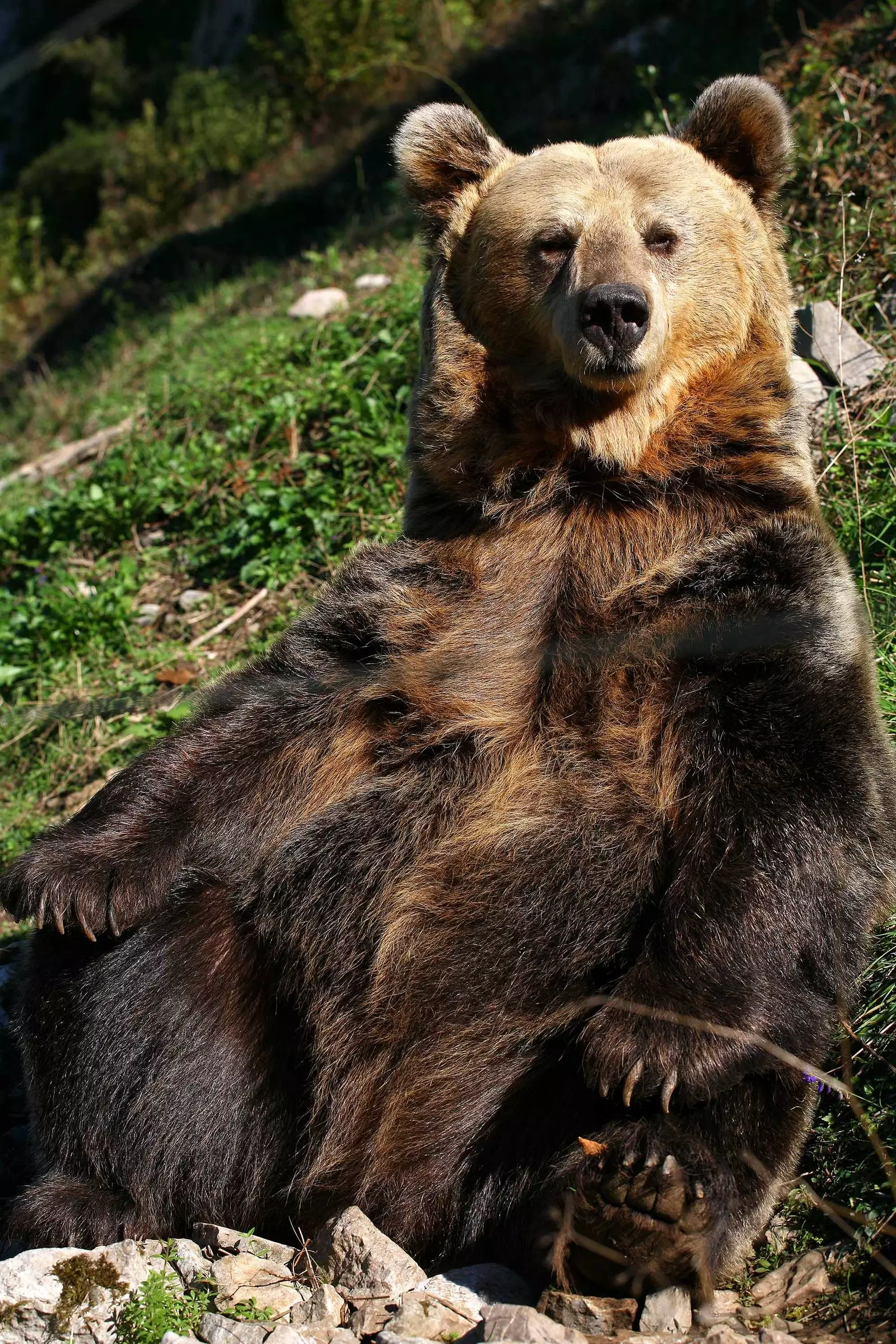
"Bears Are Good People"
As exception guides we have two of the biologists in charge of the scientific and technical research team of the Fundación Oso Pardo, Juan Carlos Blanco and Fernando Ballesteros, and several members of the bear watch patrols that the association has the area. No one better than them to show us their sanctuaries and translate what our eyes cannot understand.
“Do you see the broken branches of those trees?” Fernando points out. "Bears are agile climbers and they love the tender shoots of oak trees."
After the hardships of winter, bears are especially active during the spring, hence this is the best time to come and observe them. They spend most of their time giving wobbly walks in search of food and, in the case of males in heat, a willing mate. For them, 20 kilometers a day is nothing.
Bears are very promiscuous. Males mate with several females on the same day, while females can carry offspring from different fathers.
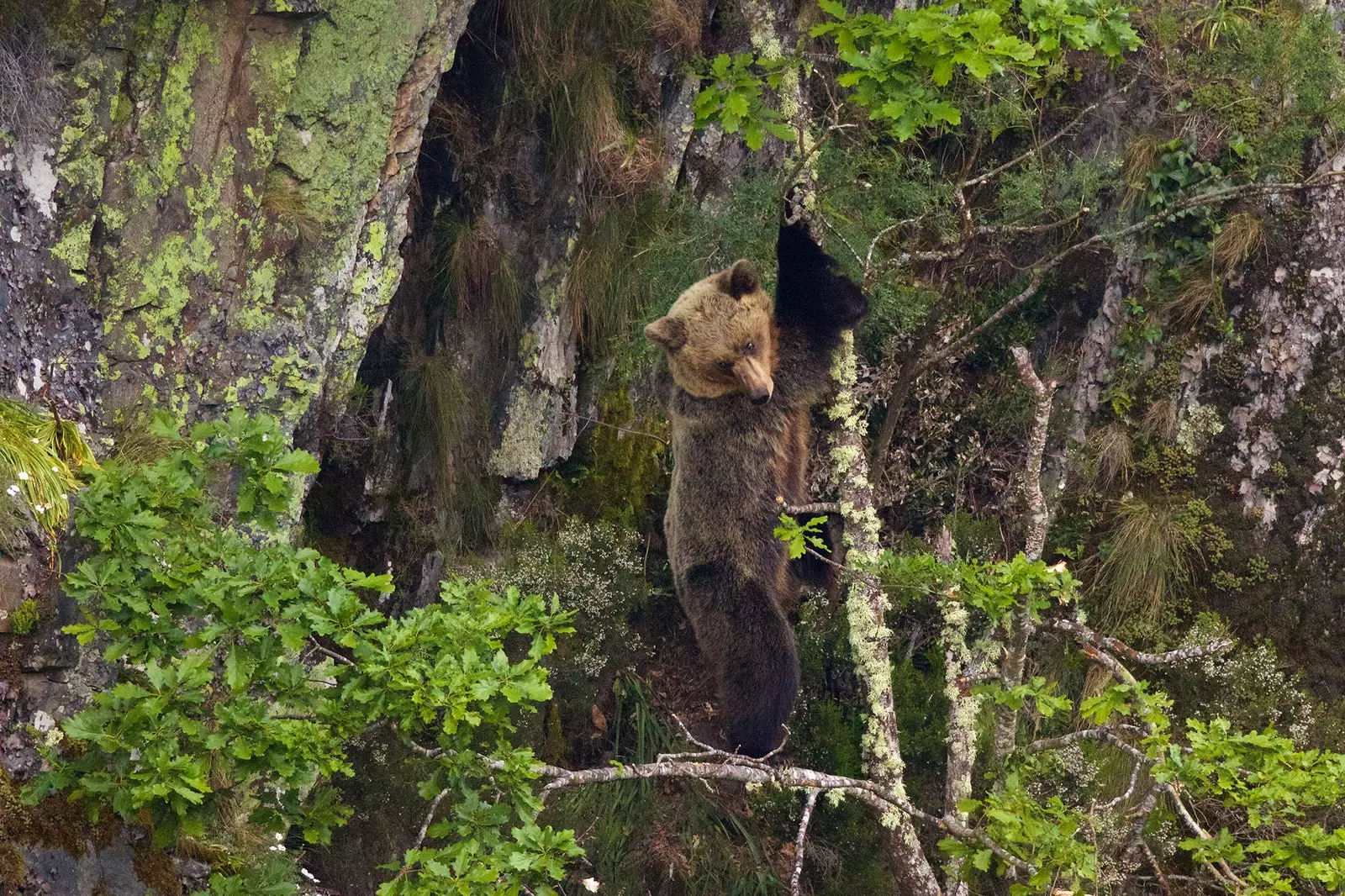
A bear climbs an oak
"Each one has his reasons," Begoña Almeida points out in a tone of going to tell a secret. “They seek to impose their dominant gene and they seek to protect their future offspring. The main danger to the cubs is a male in heat, who will try to kill them to make the female available again. But if the male recognizes the female as an old flirt, he will think one of those young is his and won't attack them."
in charge of patrolling the bear territory of the Palencia Mountains and organizing workshops and educational outings to the countryside, Begoña loves sharing curiosities about the fascinating behavior of bears.
Confined today to the wildest and most inaccessible redoubts of geography, There was a time, back in the 17th and 18th centuries, when brown bears roamed freely throughout continental Europe. But the loss and fragmentation of their habitat, poaching and the ancestral fear of a society that considered them vermin, decimated their population on the peninsula to the brink of extinction in the 1980s and 1990s.
When a group of young ecologist friends who refused to see the species disappear from our ecosystem created the Brown Bear Foundation in 1992 – the initial money came from a benefit concert for Last in Line – hardly any of them had ever seen a bear.
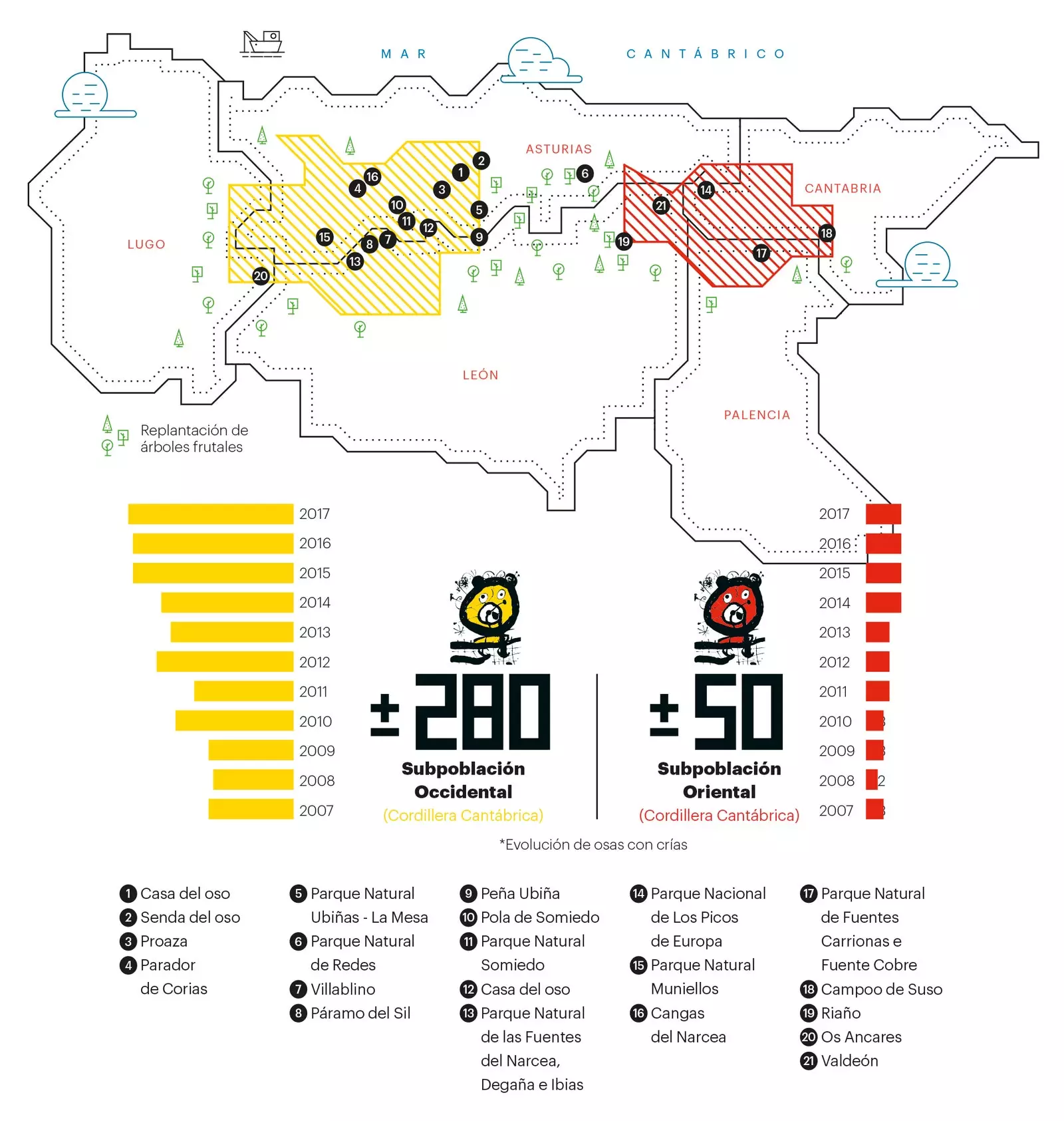
The population of brown bears has been growing in Spain in recent decades
Logical: in Spain there were less than 80 left. Currently, it is estimated that Around 370 plantigrades move through our mountains, according to estimates based on censuses of females with young, easier to measure.
The majority, some 330, including 41 females with 73 young, are here, in the Cantabrian Mountains, and more specifically in the protected natural areas that extend from Os Ancares de Lugo to the central zone of the mountain range between León and Asturias, where the population is believed to reach 280 individuals.
The figures may sound ridiculous if we compare them with those of Russia, with 36,000 bears, or Romania, with around 7,000, but, with a constant growth of ten percent, bear keepers can feel proud and relieved.
With the old threats still latent, but under control - let's not forget that the brown bear is still an endangered species -, the efforts of the FOP are now focused on expanding the territory of action of the bears, creating environmental corridors that allow a continuous and genetically stronger population along the entire Cantabrian coast, and in ensure harmonious coexistence between bears and humans. Also in regulating the increasingly growing tourism that arrives attracted by the "bear brand".
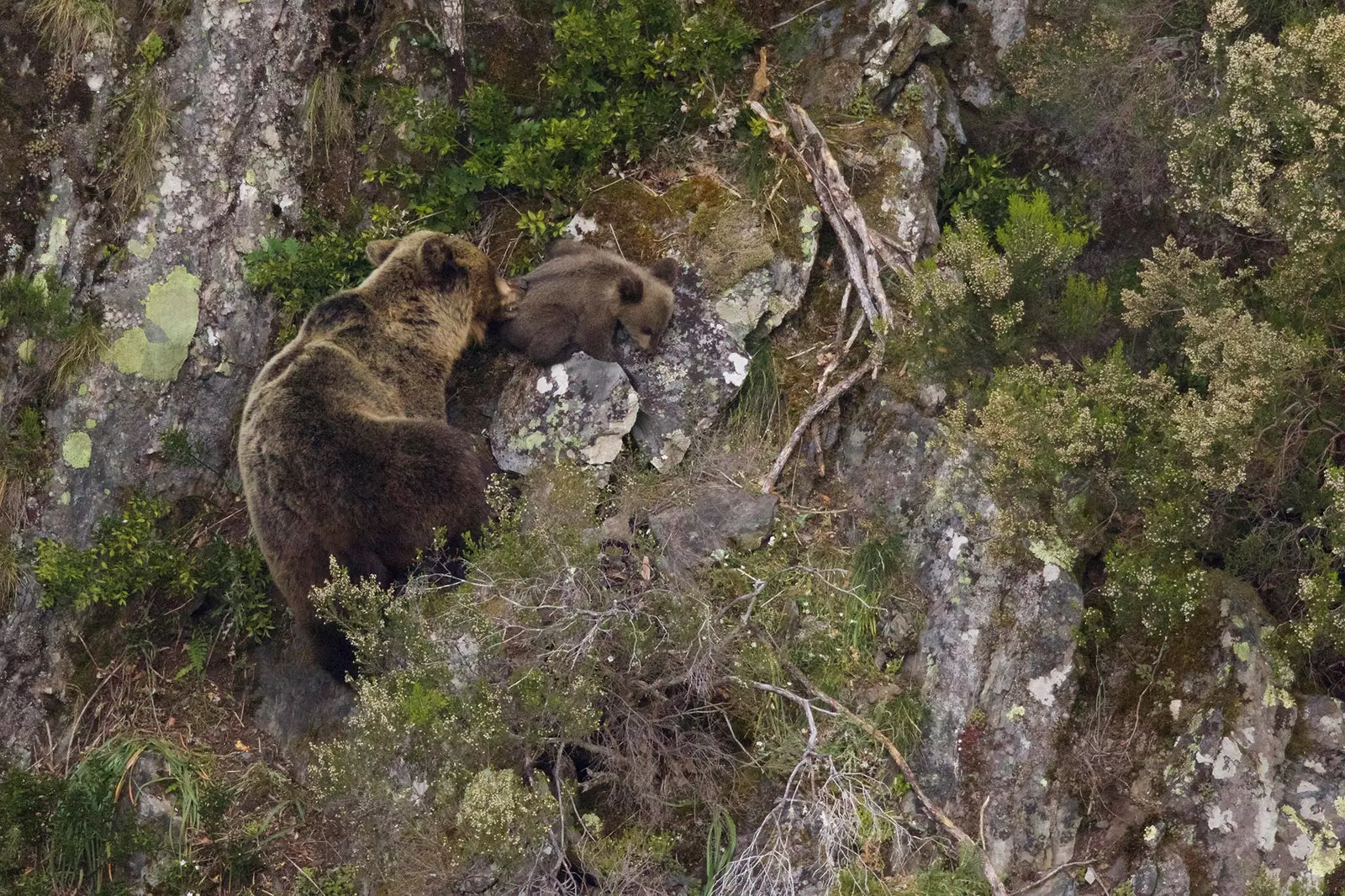
A bear and her cub
With the first rays of sun sneaking through the treetops, the forest is full of nuances. Also sound. The chicks call for breakfast from their nests and the orchestra of pollinating insects turns up the volume as the temperature rises.
It is inevitable to fantasize about the xanas, the water fairies combing their long hair next to streams. until a succession of footprints on the edge of the road It takes us out of our reverie. “They are recent. From a not too big bear, probably a teenager. It has already gone far away”, concludes Juan Carlos, not without some disappointment.
"Bear attacks on humans are isolated and unusual cases, usually related to hunting." And he tells us the story of that old man who, last year, while walking his dog – something totally prohibited in bear areas – surprised a bear behind a bush. "The countryman was so scared that he couldn't think of anything else but to hit him on the head with a club," he counts without suppressing laughter: “And the bear, even more astonished, instead of crushing him like a mosquito, he pushed him away with his paw and fled. I think that shows that bears are good people."
At the top of a cliff open to the narrow gorge, two patrol cars await us with their powerful binoculars focused on the quarry on the opposite slope. They have been observing the games of a female with her two offspring for an hour , but now they have decided to go to sleep.
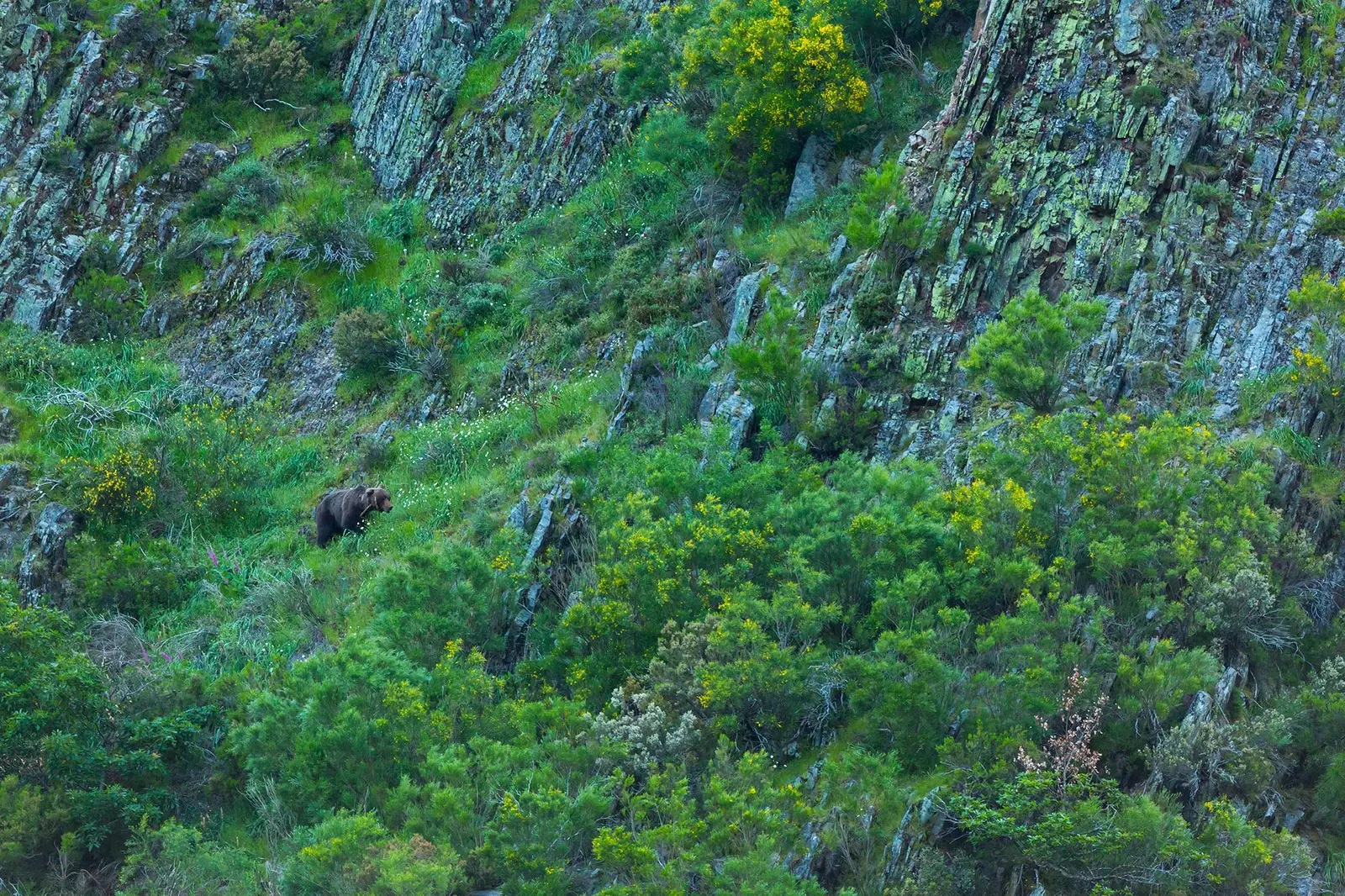
The bear is hard to get for an unaccustomed human eye
While the cubs are small, mama bear's prudence leads him to always stay close to her lair, hidden in steep terrain and difficult to access. From her rocky vantage point, she can take a carefree nap and, at the same time, watch out for any males to come near.
Those who are nervous are the patrollers, who see a dense fog advancing from the depths of the valley. They know that time gives no respite: if the fog reaches us, there will be nothing to see.
“Just at our o'clock, about five meters to the right of the crooked tree. Do you see that mound?” they urge us. No, which of all the trees? For untrained eyes like ours, distinguishing the fur of a brown bear on the rocks is not so easy. Unless you move...
Suddenly, as if listening to our pleas, a huge figure wakes from its drowsiness yawning listlessly just before the mist hides the spring landscape with its invisible mist.
_*This article and the attached gallery were published in the number 127 of the Condé Nast Traveler Magazine (April) . Subscribe to the print edition (11 printed issues and digital version for €24.75, by calling 902 53 55 57 or from our website ) and enjoy free access to the digital version of Condé Nast Traveler for iPad. The April issue of Condé Nast Traveler is available at its digital version to enjoy it on your favorite device. _

Illustration inspired by Miró's painting
